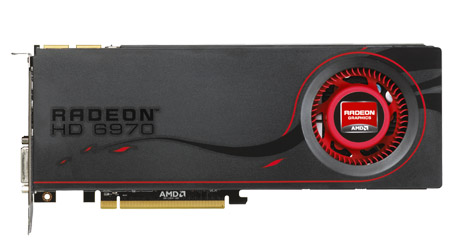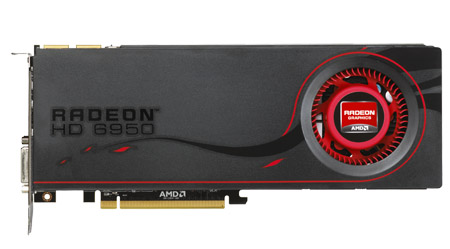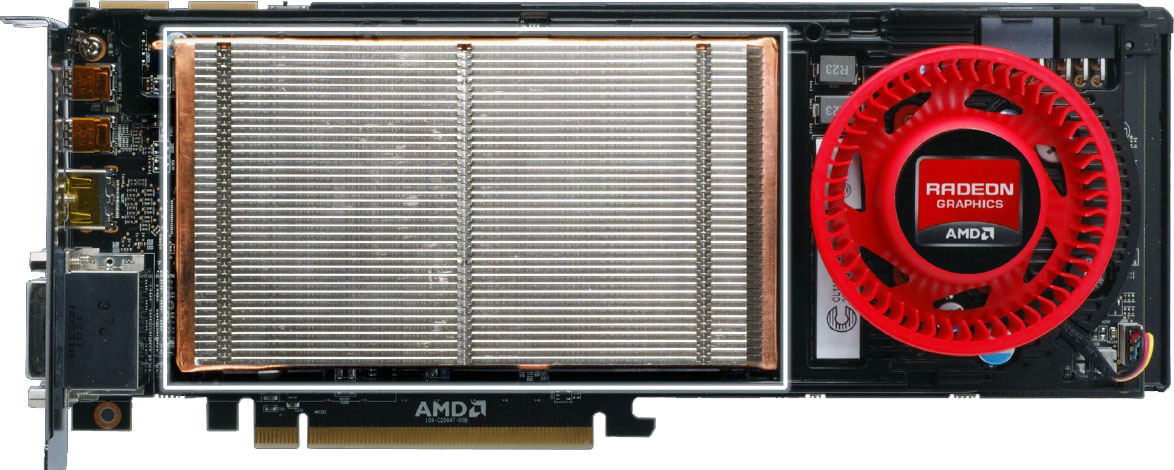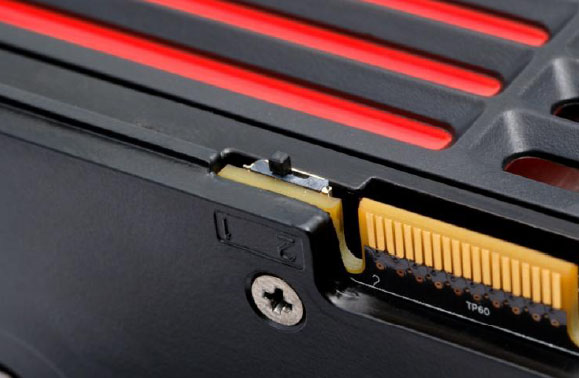Radeon HD 6970 And 6950 Review: Is Cayman A Gator Or A Crock?
Last month, Nvidia launched its GeForce GTX 580, but we told you to hold off on buying it. A week ago, Nvidia launched GeForce GTX 570 and we again said "wait." AMD's Cayman was our impetus. Were Radeon HD 6970 and 6950 worth the wait? Read on for more!
Meet Radeon HD 6970 And Radeon HD 6950
AMD’s Cayman currently appears on two different graphics cards: Radeon HD 6970 and Radeon HD 6950. Both boards use the same GPU in slightly different configurations.
The flagship features Cayman in its unadulterated form, with all 24 SIMD engines turned on, along with 96 associated texture units. In addition to the full complement of Cayman’s specs, the 6970 also runs at an elevated 880 MHz clock rate. As with previous architectures, AMD employs a 256-bit memory bus. This time around, however, the company’s first shipping boards feature 2 GB of GDDR5 memory. This is particularly notable in light of the fact that it’s using ICs capable of 1375 MHz on the Radeon HD 6970, yielding a 5500 MT/s data rate and up to 175 GB/s of bandwidth. Nvidia gets more throughput using slower ICs, but at the expense of a wider memory bus, resulting in a larger GPU and more PCB traces.
AMD says that, at idle, the Radeon HD 6970 will scale all the way down to 20 W. That’s 7 W lower than the Cypress-based Radeon HD 5870. The flagship card also sports a PowerTune (effectively its TDP) maximum power of 250 W. In comparison, the Radeon HD 5870 has a 188 W maximum active power. Uh oh. Didn’t Nvidia’s GeForce GTX 480 also have a 250 W peak thermal design figure? As you’ll see on the power consumption page, AMD doesn’t come anywhere near GeForce GTX 480 levels, though. More typical in gaming situations, the company says, is a roughly 190 W.
The Radeon HD 6950 sports the same Cayman GPU, but it loses two of the SIMD engines, yielding 1408 total ALUs (22 SIMDs * 16 thread processors per engine * 4 ALUs per thread processor). It also gives up four texture units per SIMD engine, dropping the total from 96 to 88. AMD doesn’t alter the chip’s back-end, delivering the same 32 ROPs found on Radeon HD 6970, and indeed the Cypress-based Radeon HD 5870 as well. Additionally, we’re looking at the same 2 GB frame buffer at first, though AMD says board partners are already working on 1 GB versions, too. Clock rates do drop, though. The Radeon HD 6950’s core runs at 800 MHz and its memory is slowed to 1250 MHz, yielding a 5000 MT/s data rate and up to 160 GB/s of throughput.
Cutting back on active resources doesn’t reduce idle power consumption at all, but it does purportedly drop the peak PowerTune limit to 200 W, bringing typical gaming power down to about 140 W (a 50 W reduction compared to Radeon HD 6970). Not a crew to take quantifiable data at face value, we ran our own logged power measurements (available further into the story) and found roughly 42 W separating the 6970 and 6950. That’s close enough to AMD’s specs for us.
Physically, the Radeon HD 6970 and Radeon HD 6950 are almost identical. They each measure nearly 11” long—that’s about an inch longer than the Radeon HD 6870 and about half an inch longer than the GeForce GTX 580/570.
The Radeon HD 6970’s power demands necessitate one eight-pin and one six-pin auxiliary connector, while the Radeon HD 6950’s lower clocks make it possible to get away with two six-pin connectors. Otherwise, they both have the same collection of display outputs and the same two CrossFire bridges, enabling configurations of up to four cards working in tandem. As with prior generations, the new Radeons employ the same vapor chamber cooling technology that Nvidia is touting on its latest boards. The result is impressive acoustic performance; in single-card configurations you rarely even hear the thing spin up under load.
Get Tom's Hardware's best news and in-depth reviews, straight to your inbox.
One last interesting add-on that AMD chose to integrate is a switch right next to the CrossFire connectors. Both Radeon HD 6900-series cards feature two BIOS files (one locked by AMD, the other available for modding), and flipping that switch swaps between them. Now, most folks will never flash the BIOS on their video card. But for those that do, and for press guys like us who sometimes end up with early firmware that needs to be updated to retail status, this comes in handy.
Current page: Meet Radeon HD 6970 And Radeon HD 6950
Prev Page PowerTune: Changing The Way You Overclock Next Page Test Setup And Benchmarks-
Annisman Thanks for the review Angelini, these new naming schemes are hurting my head, sometimes the only way to tell (at a quick glance) which AMD card matches up to what Nvidia card, is by comparing the prices, which I think is bad for the average consumer.Reply -
rohitbaran These cards are to GTX 500 series what 4000 series was to GTX 200. Not the fastest at their time but offer killer performance and feature set for the price. I too expected 6900 to be close to GTX 580, but it didn't turn out that way. Still, it is the card I have waited for to upgrade. Right in my budget.Reply -
notty22 AMD's top card is about a draw with the gtx 570.Reply
Pricing is in line.
Gives AMD only hold outs buying options, Nvidia already offered
Merry Christmas -
IzzyCraft Sorry all i read was thisReply
"This helps catch AMD up to Nvidia. However, Intel has something waiting in the wings that’ll take both graphics companies by surprise. In a couple of weeks, we'll be able to tell you more." and now i'm fixated to weather or not intel's gpu's can actually commit to proper playback. -
andrewcutter but from what i read at hardocp, though it is priced alongside the 570, 6970 was benched against the 580 and they were trading blows... So toms has it at par with 570 but hard has it on par with 580.. now im confused because if it can give 580 perfomance or almost 580 performance at 570 price and power then this one is a winner. Sim a 6950 was trading blows with 570 there. So i am very confusedReply -
sgt bombulous This is hilarious... How long ago was it that there were ATI fanboys blabbering "The 6970 is gonna be 80% faster than the GTX 580!!!". And then reality hit...Reply




